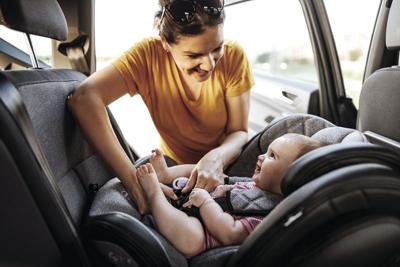Officially, summer is not here. But with temperatures in our subtropical climate already on the rise, it’s getting plenty warm – with much hotter days ahead.
It’s essential to prioritize heat safety. The South Carolina State Climatology Office, the National Weather Service, the S.C. Department of Natural Resources, the S.C. Department of Health and Environmental Control, and the S.C. Emergency Management Division are partnering to inform South Carolinians about proper safety precautions and actions to help prevent heat-related illnesses and deaths as we head toward summer.
To support the effort, Gov. Henry McMaster has issued a proclamation declaring April 29-May 3 as South Carolina Heat Safety Week.
South Carolina residents and those visiting the state are encouraged to pay close attention to local weather forecasts from the National Weather Service and local meteorologists, and stay hydrated, find cool spaces and be aware of early signs of heat-related illnesses to ensure safety during the hot season.
We join in pointing out the dangers of being exposed to heat. But some things simply should not have to be stated.
There are obvious reasons for not leaving young children alone in vehicles at any time. But how can any adult walk away from a vehicle and leave a child alone in the heat? It’s unthinkable – but it happens.
AAA advises that parents never leave a child alone in a vehicle, even if the vehicle is parked in the shade or has open, cracked or tinted windows.
According to the National Highway Traffic Safety Administration, 23 kids died of vehicular heatstroke in 2021. The national average is 38 children a year dying.
NHTSA statistics compiled from 1998 to 2014 show 636 children died from heatstroke during the period. Of the 636 deaths:
• 53%: Child “forgotten” by caregiver (336 children)
• 29%: Child playing in unattended vehicle (186 children)
• 186 children (29%) were playing in an unattended vehicle
• 17%: Child intentionally left in vehicle by adult (110 children)
On a typical summer day, the temperature inside a car (even with the windows rolled down a little) can quickly rise above 120 to 140 degrees. Even on a relatively mild day, the temperature inside a car get above 100 degrees. At those temperatures, kids are at great risk for heatstroke, which can lead to a high fever, dehydration, seizures, stroke and death.
Here are AAA tips for parents to prevent a tragedy:
• Avoid heatstroke by never leaving your child unattended in your vehicle, even for a minute.
• Create reminders and habits that give you a safety net. For example: leave an item you need at your next stop in the back seat so you don’t forget about your loved one.
• If you see an unattended child in a vehicle, call 911 and follow the instructions of emergency personnel.
• Lock your car at all times — even in your garage or driveway — so young kids can’t climb into the vehicle without your knowledge.
• Discuss hot-car safety with everyone who drives your child, including partners, grandparents and babysitters.
• Don’t drive distracted. More than half of heatstroke deaths occurred when a distracted caregiver forgot a quiet child was in the vehicle.
Accidental scenarios are terrible and every precaution is to be taken to prevent them, but knowingly leaving a child in a car, we repeat, is unthinkable.
Remember, according to the National Highway Traffic Safety Administration, “a locked car sitting in the summer sun quickly turns into an oven,” and “temperatures can climb from 78 degrees to 100 degrees in just three minutes, to 125 degrees in 6-8 minutes.”
It doesn’t have to be summer for temperatures to reach deadly levels inside vehicles.
— Times & Democrat, Orangeburg



